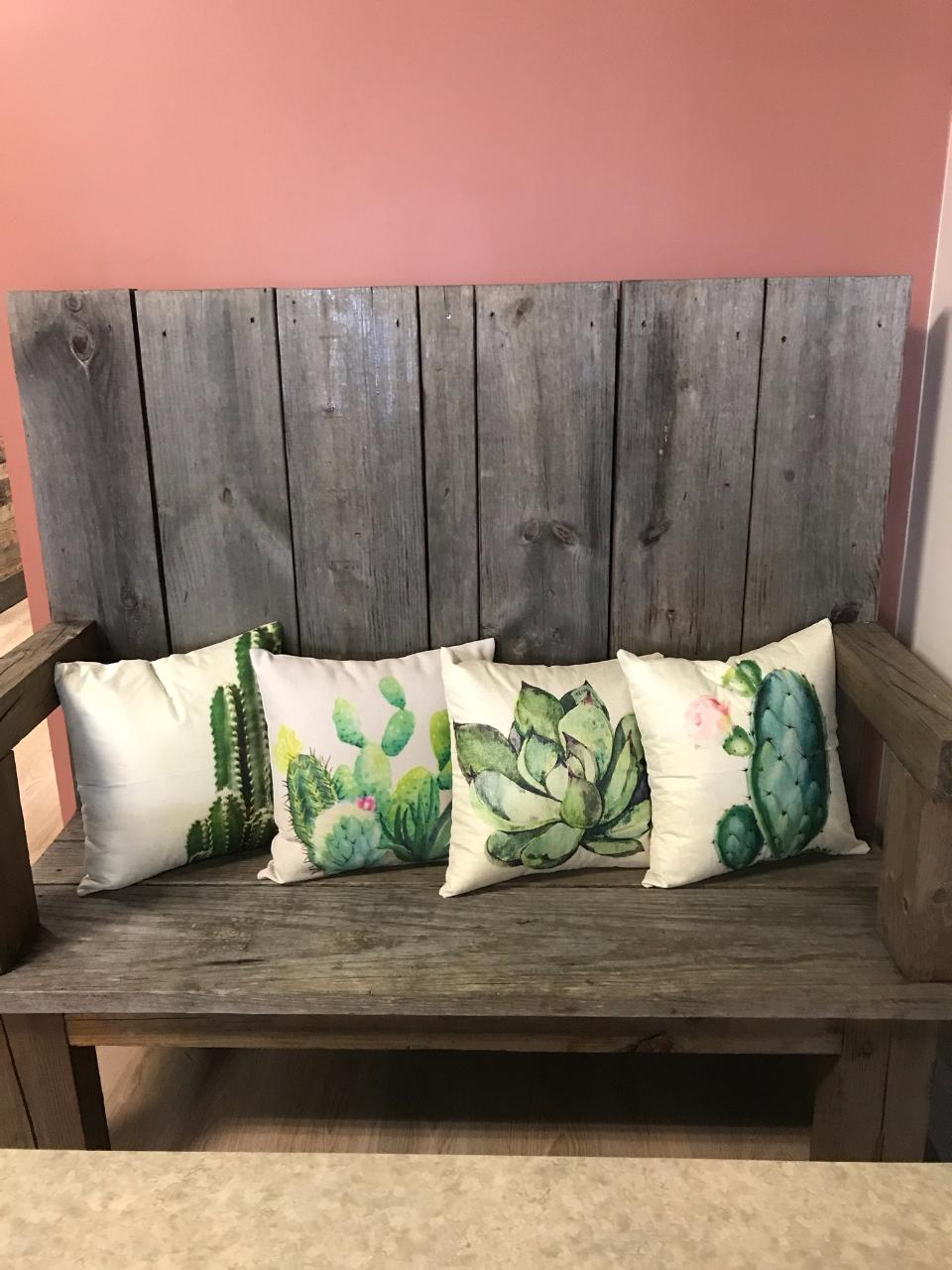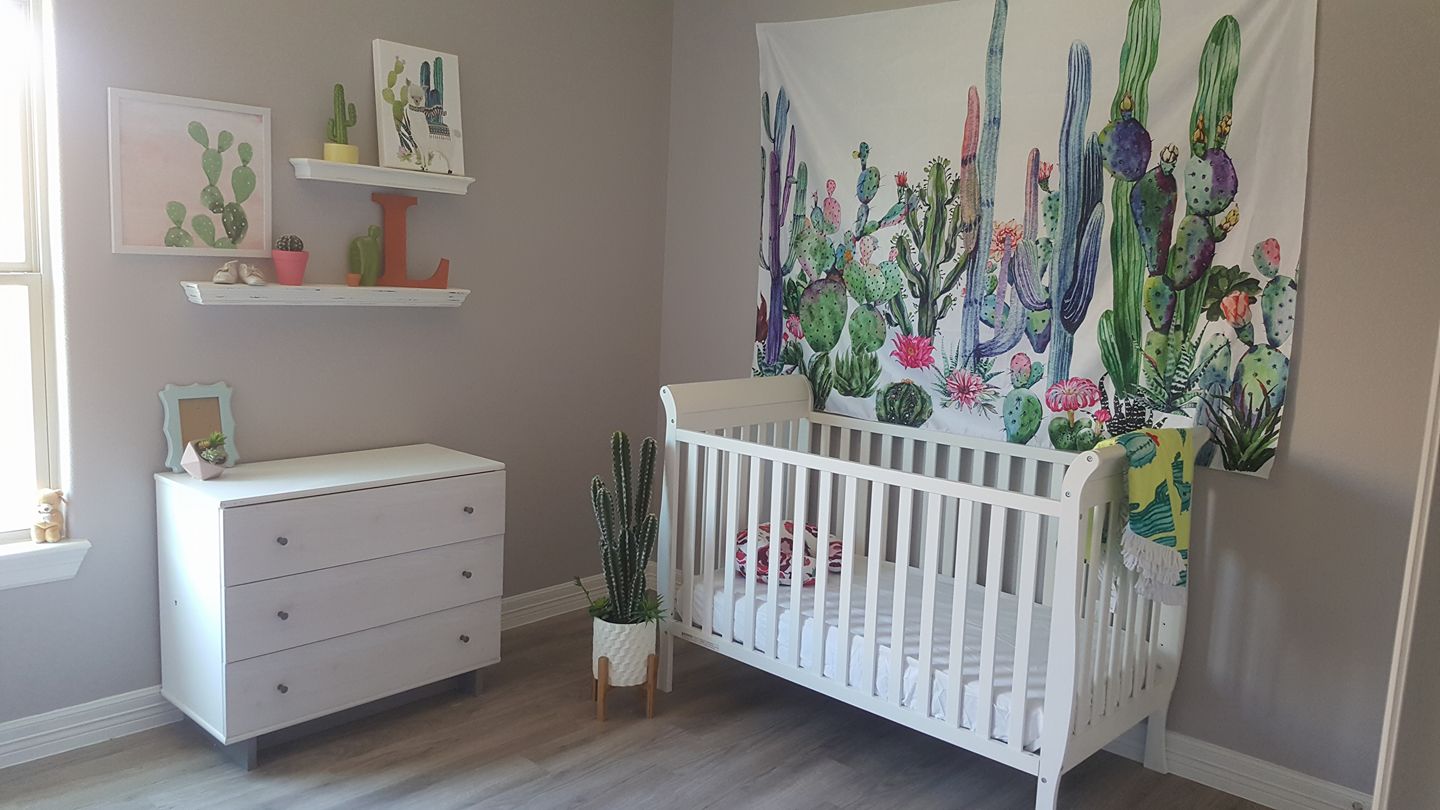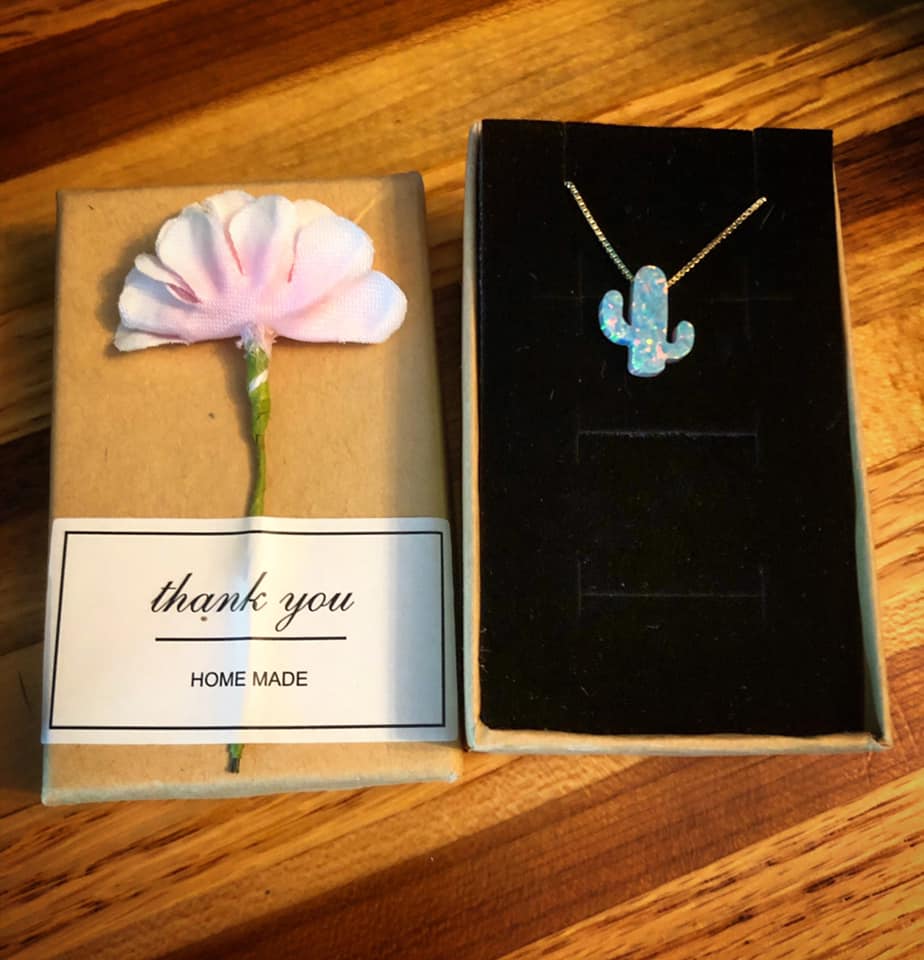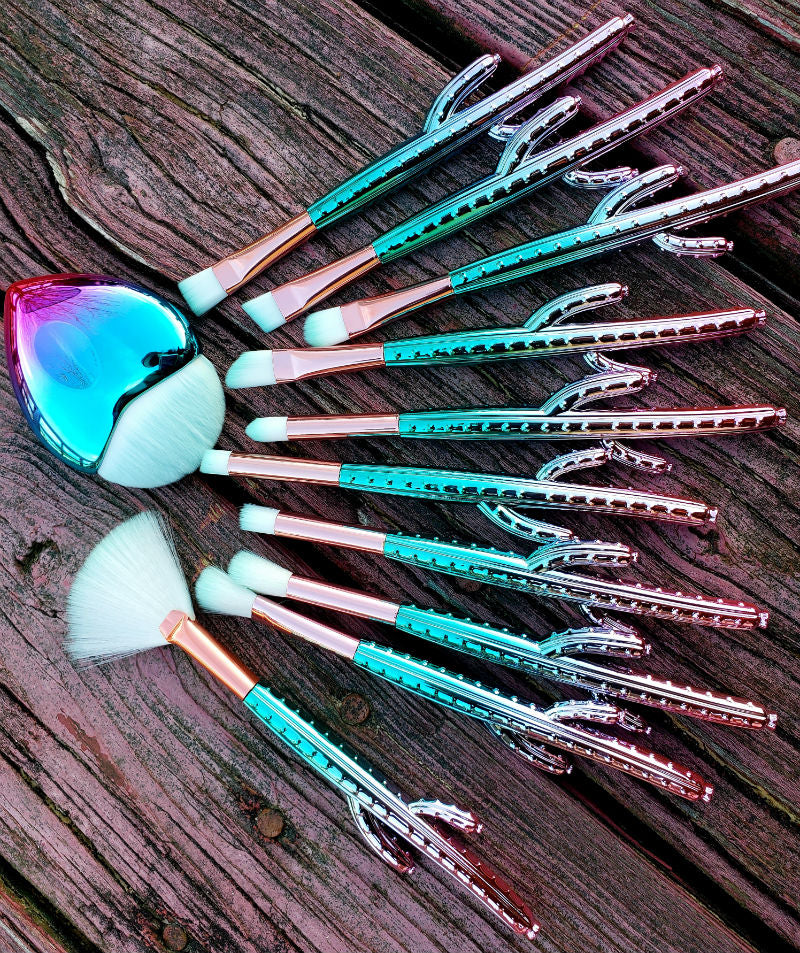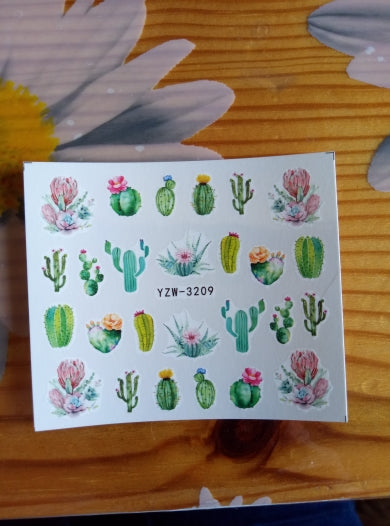There Are So Many Popular Cactus and Succulent Plants!

In the world of indoor gardening, few plants are as popular as cactus and succulents. They're tough and come in all colors, shapes and sizes, from spiky cacti to chubby succulents. The best part? They're easy to take care of with just a bit of sun and not too much water. These plants are the trendy, low-maintenance superstars that can make your space look awesome without a lot of effort!
Cacti and succulents are also often chosen as houseplants for their air purifying features. They can help improve indoor air quality by absorbing carbon dioxide and releasing oxygen during the day, making them an nurturing choice for everyone looking for natural home options.
Whether you're a succulent pro or just starting out, get ready to be amazed by these plants. There are so many succulent varieties to choose from, so let's dive in and find the best ones for your home.
Here are a just few examples of the most popular cactus and succulent plants:
Echeveria - Rosette shaped succulents with colorful, fleshy leaves

Available on Amazon: https://amzn.to/426VhQP
Echeverias are drought tolerant succulent plants that prefer bright, indirect light and well draining soil. They can be propagated by stem or leaf cuttings, and many species easily form offsets, or "pups," which can be separated and planted to grow new plants.
While they are basically low maintenance plants, echeverias are sensitive to rot if they're overwatered or planted in soil that doesn't give them enough drainage.
Echeveria plants love sunlight! They thrive in bright, indirect light, so it's best to place them near a sunny window where they can get plenty of sunshine throughout the day. However, do be careful about intense, direct sunlight, especially during the hottest parts of the day, because this can cause sunburn on their leaves.
If you notice their leaves turning brown or yellow, it might be a sign that they're getting too much sun. In that case, consider moving them to a spot with slightly less intense light. Overall, providing them with about 6 hours of bright, indirect sunlight daily should keep your Echeveria plants happy and healthy!
These plants are top choices admired for their rosette-shaped foliage and lively, showy flowers that bloom in vibrant hues of pink, red, orange, yellow, and white.
Echeverias are very popular succulents that are often used in landscaping, container gardening, and as indoor plants.
Snake Plant: The tough and stylish houseplant 
Available on Amazon: https://amzn.to/4aA9Xwi
Say hello to the Snake Plant, also known as Sansevieria, a strong indoor plant admired for its striking looks and ability to clean the air. It's tall, long leaves kind of resemble a snake's skin and come in different shades of green, some with yellow edges or cool patterns.
The Snake Plant is a champ at purifying the air. It naturally filters out harmful chemicals like formaldehyde and benzene, making the air in your home cleaner and healthier to breathe.
Taking care of a Snake Plant is pretty easy, even for new plant growers. Snake plants prefer indirect sunlight but can tolerate low light conditions. Place them near a window where they can receive bright, indirect sunlight for a few hours each day.
When it comes to watering your Snake Plant allow the soil to dry out between waterings, because snake plants are exposed to root rot if they're overwatered. So water them sparingly, usually once every 2-4 weeks depending on the humidity levels and the temperature of your home.
To jazz up your Snake Plant, try putting it in a sleek pot to match its sleek leaves. You can also make it stand out by grouping it with other low-maintenance plants.
With its cool features and knack for cleaning the air, the Snake Plant is a great choice for any home or office. Whether you want to spruce up your indoor space or add a touch of nature to your decor, the Snake Plant is one of the many great succulent choices.
Aloe Vera - Succulent plants known for their medicinal features and spiky, green leaves

Available on Amazon: https://amzn.to/3nthOZ6
For a long time, people have turned to Aloe Vera for skin problems like dry skin, burns and sunburn. The gooey gel inside its leaves is said to have stuff in it that fights inflammation and helps skin heal faster.
Although Aloe Vera is usually safe, some people might have allergic reactions or other issues. It's smart to chat with a doctor before trying Aloe Vera or any herbal additive.
Besides putting it on your skin, people also drink Aloe Vera juice or take it as a supplement. They think it helps with digestion, makes the immune system stronger, and lowers swelling.
Aloe Vera loves sunlight, so place it near a sunny window where it can get plenty of indirect sunlight throughout the day.
Water your Aloe Vera sparingly. Let the soil dry out completely between waterings, and then give it a good soak. Overwatering can lead to root rot, so it's better to underwater than overwater.
Make sure your Aloe Vera is planted in well-draining soil. A mix specifically designed for succulents works well.
Aloe Vera plants like to be a little snug in their pots, so choose a pot that's just slightly larger than the root ball.
Sedum Plants - Flexible and simple to grow succulents in many colors and shapes

Available on Amazon: https://amzn.to/3NRikuC
Sedums are usually low growing plants with thick, juicy leaves and blooms that come in various colors like white, pink, red, and yellow. They're enjoyed in gardens for being easy to care for, able to handle dry conditions, and how pretty they look.
Sedums love sunlight! Make sure to place them in a spot where they can get plenty of direct sunlight throughout the day. They normally need at least 6 hours of sunlight daily to stay healthy and lively.
Most Sedums are cold hardy and can withstand frost and freezing temperatures, though they may need protection during extreme cold snaps, especially if they're growing in containers.
These plants are drought-tolerant, so they don't need a lot of water. Let the soil to dry out completely between waterings, and then give them a good soak. Overwatering can cause their roots to rot, so it's best to use well draining cactus or succulent mix soil and to underwater rather than overwater.
On top of looking nice, Sedums can also be handy in different ways. Some kinds are used in natural remedies to help with certain health issues, while others can be used in cooking or for making dyes.
Sedums are great for wildlife, too. They offer homes and food for many insects and other animals. Overall, Sedums are versatile and pretty plants that people like for their looks, practical uses, and how they help nature.
Haworthia - A small succulent with unique, triangle shaped leaves

Available on Amazon: https://amzn.to/3M0eZs0
Haworthia plants stand out with their rosette like bunches of thick, fleshy leaves. These leaves are often shaped like triangles with pointed tips and may have white stripes or spots. When they bloom, Haworthia plants produce small, tube-shaped flowers on tall thin stems.
Haworthia plants should be put in bright, indirect sunlight. Avoid direct sunlight since it can scorch the leaves. Some kinds can even grow outdoors in warm, dry areas.
Water your Haworthia plants sparingly, and allow the soil to dry out completely between waterings. Overwatering can cause root rot, so it's better to underwater than overwater.
Use well draining soil for your Haworthia plant to prevent waterlogged roots. A mixture of both cactus potting mix and perlite works well.
Besides being nice to look at, Haworthia plants can be handy too. Some types are used in natural medicine to help with skin issues and digestive problems. They're also found in some cosmetics and skincare items.
Overall, Haworthia plants are very popular and flexible indoor succulent plants. People enjoy them for their small size, good looks, easy care, and possible health benefits.
Jade plant - A popular succulent plant with thick, oval-shaped leaves

Available on Mazon: https://amzn.to/3NKNzrf
The Jade plant, also known as Crassula ovata, is like a sturdy green friend! It's a popular succulent plant with thick, shiny oval shaped leaves that grow in pairs along the stem.
They can get up to 3 feet tall, but they're usually kept smaller with trimming. Under the right conditions, they may even sprout small, star-shaped flowers in pink or white.
Jade plants are among the favorite cactus and succulent picks because of their low maintenance. They don't need lots of water and they prefer soil that drains well. They can even handle spots with lower light. Giving them a bit of fertilizer now and then during the growing season, Spring and Summer, can help them flourish.
Jade plants are believed to bring good luck and are often given as gifts for prosperity. They're like small green protectors that add a touch of nature to your home. Some people also use them in natural remedies for issues like upset stomach, diarrhea, and skin conditions.
Overall, Jade plants are loved as attractive indoor plants and for their easy care, toughness, and healing qualities.
Christmas cactus - A colorful and easy to care for cactus that blooms around the winter holidays

Available on Amazon: https://amzn.to/3B1YfKI
The Christmas cactus, also known as Schlumbergera, is like a little celebration in your home, adding a touch of seasonal joy!
It is a member of the cactus family, but unlike most cacti, it doesn't have spines or thorns. It's a succulent with flat, leafy stems that bloom with large colorful flowers with colors from white and pink to red and purple around Christmas time, bringing holiday cheer.
Place your Christmas cactus in a spot with bright, indirect light. Avoid direct sunlight, especially during the hottest part of the day.
Water your Christmas cactus completely and allow the top inch of soil to dry out between waterings. Overwatering can cause to root rot, so it's important to keep a balance.
Fertilize your Christmas cactus with a balanced houseplant fertilizer thinned to half strength every 4-6 weeks during the growing season (spring and summer). Avoid fertilizing during the dormant season (fall and winter). When they blossom can change based on different types and how they're grown.
Beside being pretty, Christmas cacti are also used in natural remedies for things like digestive issues and inflammation.
Overall, the Christmas cactus is a favorite house plant because it's easy to care for, has cheerful flowers, and can also have some health benefits.
Bunny Ear Cactus: The Cute and Easy-to-Care-For Plant

Available on Amazon: https://amzn.to/3JgdgNb
With its cute looks and simple care needs, the Bunny Ear Cactus is a must have for any succulent enthusiast. Whether you're obsessed with succulents or just starting out, this charming plant will bring happiness and charm to your home.
What makes the Bunny Ear Cactus special is its shape and texture. The pads are covered in tiny spines, which add to its cuddly appearance. But remember, those little spines can be prickly, so handle with care. Its soft, velvety texture is so tempting to touch!
Caring for a Bunny Ear Cactus is super easy. It loves to get plenty of bright, indirect sunlight. It thrives in sunny locations but can also handle partial shade.
Water your Bunny Ear Cactus sparingly, letting the soil dry completely between waterings. Overwatering can lead to root rot, so it's best to lean on the side of underwatering.
Be sure to use well draining cacti and succulent soil. This will help avoid waterlogged roots and help your plants get the best growth.
If you want more plants, just take a pad, allow the cut ends to callus over for a few days, and then plant it in soil. Soon, you'll have a bunch of Bunny Ear Cacti to enjoy!
Prickly pear cactus - A large, spiny cactus plant with flat, paddle-shaped parts and edible fruit

Available on Amazon: https://amzn.to/44BgsMv
The prickly pear cactus, also known as Opuntia, is like a tough plant with a surprise! It's called "prickly" because it has sharp spines, but it also gives yummy fruits called prickly pears.
People like it because it's easy to grow and adds a touch of desert beauty to gardens. The prickly pear cactus is like a flexible friend with a sweet side!
The prickly pear cactus is native to the Americas, but now it's grown all around the world. It's a big group with over 200 types and lots of different varieties you can grow.
Prickly pear cacti have flat pads covered in spines and tiny hair-like things called glochids. They create big, colorful flowers in yellow, orange, and red. Afterward, they grow fruit that you can eat, often used in tasty food and drinks.
These cacti aren't just pretty and tasty—they're useful too! Some kinds are used in natural medicine for healing wounds, tummy issues, and swelling. Also, the pads and fruit are used in skincare products because they're good for keeping skin moist and soothing irritation.
Prickly pear cacti are tough resilient plants and can handle different climates, from hot deserts to tropical areas.
Plus, they're tough cookies when it comes to drought. They can go without water for quite a while. So water your prickly pear cactus sparingly, especially during the growing season (spring and summer). Let the soil dry out completely between waterings to prevent root rot.
Prickly pear cacti are easy to propagate. You can propagate them from pads or seeds. Allow cut pads to dry for a few days before planting them in well-draining soil. They prefer soil that drains well and lots of sunlight, but they can survive with less sun and not-so-great soil too.
All in all, the prickly pear cactus is a handy and appreciated plant. People like it for its looks, its tasty fruit, its helpfulness in medicine, and its benefits for the skin.
Barrel cactus - A round, spiny cactus that can grow quite large and is popular for its unique shape

Available on Amazon: https://amzn.to/42vGvTz
The barrel cactus is like a chubby friend! It's round and fat, like a barrel, with lots of pointy spines all over it. People like it because it looks cool in gardens and doesn't need much water. The barrel cactus is like a little desert treasure, bringing a touch of wild beauty wherever it grows!
The barrel cactus, also called Ferocactus, is a kind of cactus found in the Americas. It comes in many shapes and sizes, with over 30 different kinds.
These popular cacti have round or barrel-shaped bodies with many ribs and spines. They can grow pretty tall, up to several feet, and bloom with beautiful yellow or red flowers in the summer. Plus, some types even produce edible fruit!
Barrel cacti are liked for decorating in dry places like the southwest US and Mexico. They're tough and can handle dry spells and hot weather, so they're great for desert areas with little water.
So water your barrel cactus sparingly, letting the soil to dry out completely between waterings. During the growing season, spring and summer, water the cactus when the top inch of soil feels dry to the touch. Cut back on watering in the winter months when the cactus is resting.
Also use well-draining soil for your barrel cactus. A cactus or succulent mix works well. Avoid soil that retains too much moisture, because that can lead to root rot.
Be sure to put your barrel cactus in a sunny location where it can get direct sunlight for several hours each day. These cacti love sunlight and thrive in bright, sunny conditions.
Some types of cacti are also used in natural remedies for things like helping wounds heal, easing pain, and reducing fever. And it's important to remember, some cacti can be harmful if not handled carefully so they should be used with caution.
Overall, the barrel cactus is a tough and eye-catching plant loved for its beauty and possible health benefits.
As we finish our look into cactus and succulent plants, let's keep in mind the best ones we found. From the calming Aloe Vera to the adaptable Sedums, each plant has its own special charm and perks.
Now, I encourage you to explore these well-liked varieties. Whether you're a plant enthusiast that already has a succulent collection, or just getting started, there's something enchanting about caring for these tough plants.
As you enjoy your plant journey, keep in mind the beauty and flexibility of cacti and succulents. They're more than just plants—they're buddies that bring happiness, peace, and a bit of nature into our homes.
So, let's cheer for these amazing plants and keep discovering the wonders of the plant world. Happy gardening, and may your place be filled with the positive energy of cacti and succulent plants!
Enjoy your choices of the very many popular cactus and succulent plants!
As an Amazon Associate we earn from qualifying purchases.












